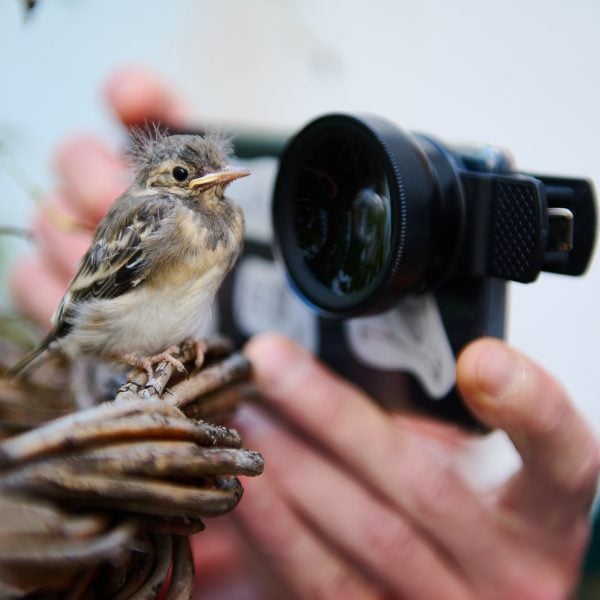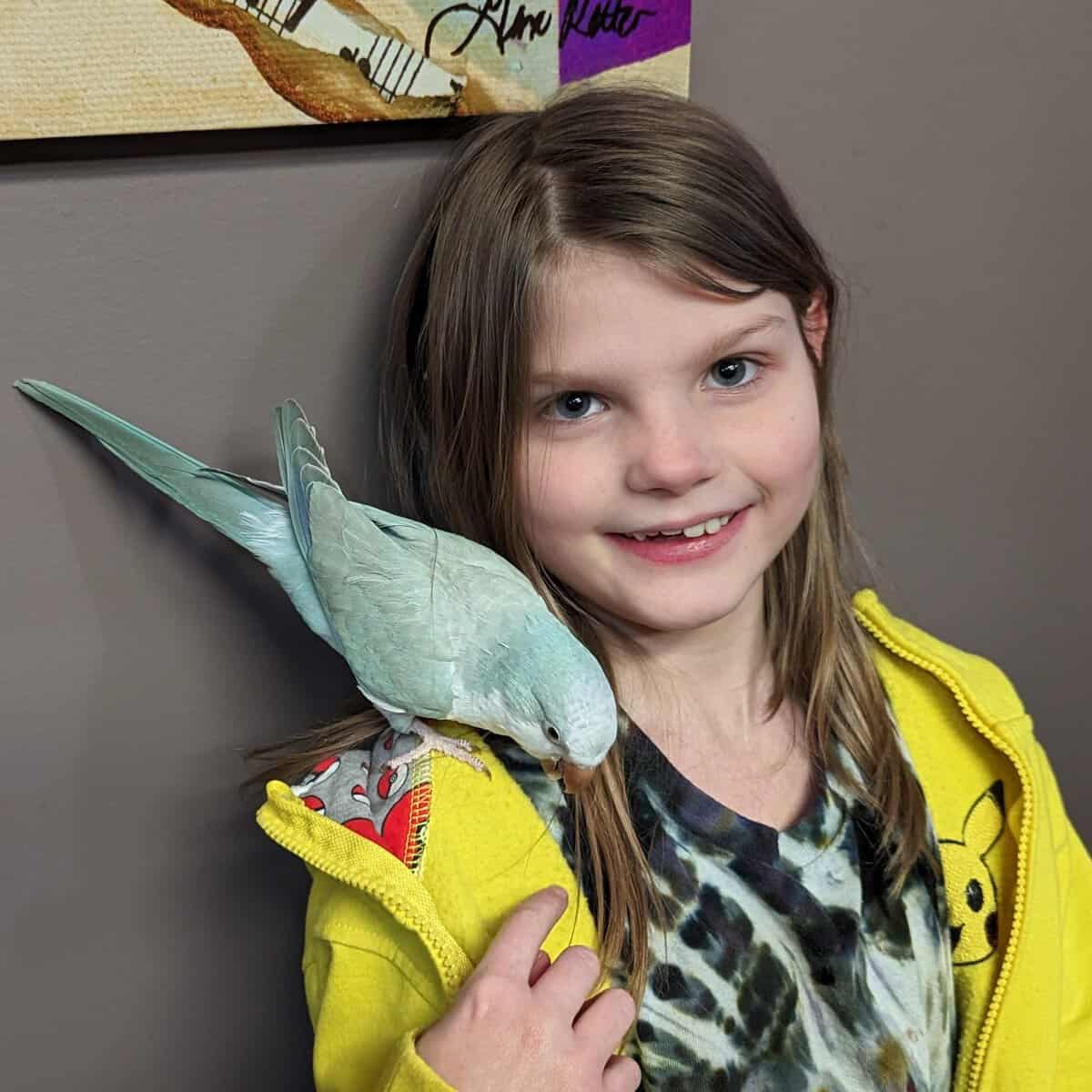
Parrots Have Voice-Prints Like Humans-Heres How Urban Birds Find Their Flock
Last Updated on by Catherine Tobsing
New research reveals monk parakeets, aka Quaker parrots, use unique vocal fingerprints to stand out in noisy cities.
The Discovery in Barcelona’s Skies
Scientists tracked 229 wild monk parakeets in Barcelona for two years, recording **5,599 calls** to answer a burning question:
Do parrots have recognizable “voices” across different calls, like humans?
Key Findings
3/5 call types ~ analyzed had unique individual signatures—like a parrot ID card encoded in sound.
Contact calls ~ (used to locate flockmates) showed the strongest individual distinctiveness, despite being more variable than other calls.
Evidence of “voice-prints”—consistent acoustic features across call types that could act like a vocal fingerprint.
Why Urban Parrots Need Voice Recognition
In crowded cities like Barcelona (or Chicago!), standing out acoustically is survival-critical. Imagine trying to find your friends in a windy park full of identical-looking green parrots! These vocal signatures likely help:
1️⃣ Reunite flocks scattered by urban noise/wind
2️⃣ Avoid conflicts with rival parrot groups
3️⃣ Maintain social bonds in chaotic environments
Feathered Factoid: Monk parakeets are the only parrots that build stick nests(like apartment complexes!) instead of using tree cavities. Their vocal complexity may have evolved alongside their unique urban nesting habits.
What This Means for Bird Lovers
Next time you hear parrots squawking overhead, listen closely—you might be hearing individual voices negotiating life in the concrete jungle. This research opens doors to:
– Better understanding parrot “dialects” in different cities
– Improving conservation efforts for urban wildlife
– Bio-inspired voice recognition tech (yes, really!)
The detailed analysis of these thousands of parrot vocalizations yielded fascinating insights into their communication strategies:
Vocal Identification: A remarkable three out of the five distinct call types examined exhibited unique individual acoustic signatures. These signatures act like a sonic identification card, allowing individual parrots to be distinguished from one another through their calls.
️ The Power of “Hello”: Contact calls, specifically used by parrots to locate and communicate with their flock mates, displayed the most pronounced individual distinctiveness. This is particularly noteworthy given that contact calls tend to be more variable in their acoustic structure compared to other types of parrot vocalizations. The ability to identify individuals even within these fluctuating calls highlights the importance of this vocal fingerprint.
Beyond Mimicry: True Vocal Identity: The research provided compelling evidence for the existence of “voice-prints” in monk parakeets. These voice-prints are characterized by consistent acoustic features that are maintained across different types of calls produced by the same individual. This suggests a fundamental aspect of vocal identity, rather than simply learned variations or mimicry, allowing for reliable individual recognition within the flock.
Navigating the Concrete Jungle: Why Unique Voices Matter for Urban Parrots
In the cacophony of urban environments like Barcelona – and indeed, our own Windy City Parrot, formerly of Chicago which also hosts thriving populations of monk parakeets – the ability to stand out acoustically is crucial for survival and social cohesion.
Imagine the challenge of locating familiar individuals amidst the visual and auditory clutter of a busy park filled with numerous, seemingly identical green parrots. These unique vocal signatures likely play a vital role in several key aspects of urban parrot life:
The next time you hear the lively squawks of parrots echoing through the city, take a moment to appreciate the intricate communication taking place.
You might be hearing the distinct individual voices of these resilient birds as they navigate the challenges and opportunities of urban life. This groundbreaking research opens up exciting new avenues for understanding avian communication and its implications:
- Unraveling Urban Parrot “Dialects”: Further research could explore potential variations in vocal signatures and call structures among monk parakeet populations in different urban environments, shedding light on the development of regional “dialects” within the species.
- Enhancing Urban Wildlife Conservation: A deeper understanding of parrot communication can inform more effective conservation strategies for urban wildlife, potentially through acoustic monitoring and habitat management that considers their social and communicative needs.
- Inspiring Technological Innovation: The intricate vocal recognition system of parrots could even inspire the development of new bio-inspired voice recognition technologies, demonstrating the potential for learning from the natural world.
Written by Mitch Rezman and the Windy City Parrot content team
Author Profile
Latest entries
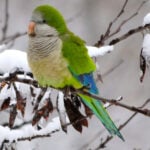 The Traveling BirdJune 26, 2025Can You Name 5 Parrot Species That Are Living Wild in the USA?
The Traveling BirdJune 26, 2025Can You Name 5 Parrot Species That Are Living Wild in the USA? Bird BehaviorJune 26, 2025How is it Parrots Are Problem Solvers Social Animals and Even Use Tools?
Bird BehaviorJune 26, 2025How is it Parrots Are Problem Solvers Social Animals and Even Use Tools?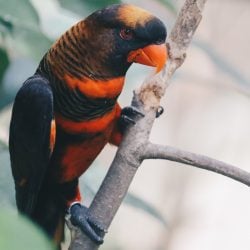 Bird & Parrot AnatomyJune 25, 2025How a Tiny Chemical Modification Makes Parrots Nature’s Living Paintings
Bird & Parrot AnatomyJune 25, 2025How a Tiny Chemical Modification Makes Parrots Nature’s Living Paintings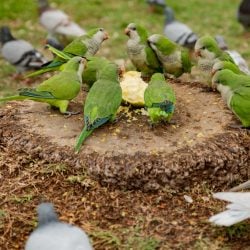 PigeonsJune 20, 2025How Do Parrots Thrive in Cities Outside Their Native Habitats?
PigeonsJune 20, 2025How Do Parrots Thrive in Cities Outside Their Native Habitats?


